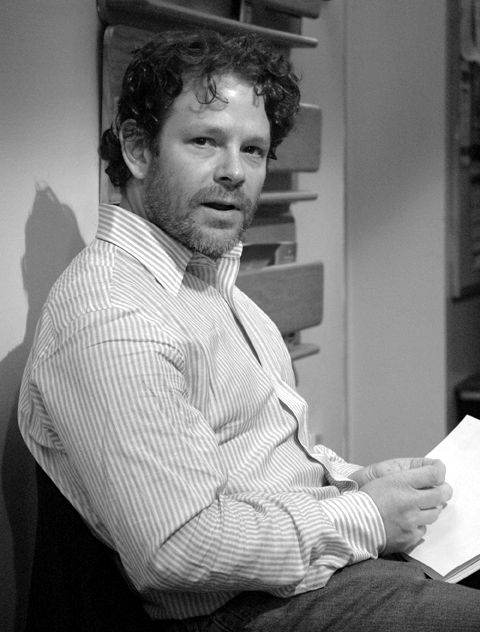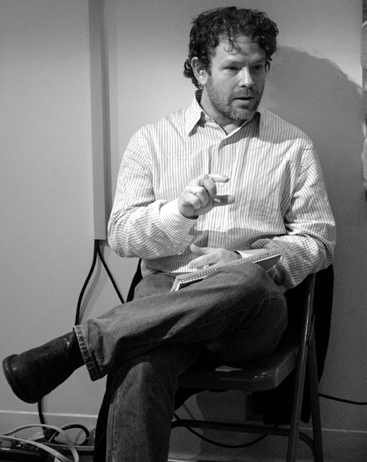Lecture: David Bornstein

David Bornstein. Photo: Laurel Angrist. © 2007 Laurel Angrist.
RELATED:
David Bornstein loves fresh ideas — especially if they solve difficult social problems. But so far, he says, social entrepreneurship has flown below the mainstream-media radar.
Bornstein, who spoke at NYU's journalism department on April 18, 2007, was one of the first journalists to start writing about social entrepreneurship. In the media's failure to cover the field, he sees a big opportunity. "The dot-org boom is bigger than the dot-com boom," Bornstein said. "And the media has failed to notice so far."
Bornstein worked as a beat journalist for years before stumbling upon the burgeoning world of social entrepreneurship. He received his master's degree in journalism from NYU in 1989 and then took a job at Newsday in New York. Early in his career there, his editor sent him to Brooklyn, where a grandmother had been killed. Bornstein remembers being crushed by reporting yet another sad story. "Is this really what I think the world needs to hear more of?" he remembers asking himself on the train ride back to the newsroom. “Maybe I am just not tough enough; maybe I should quit."
"The dot-org boom is bigger than the dot-com boom," Bornstein said. "And the media has failed to notice so far."
His enthusiasm for reporting was restored when he heard about the Grameen Bank in Bangladesh. Grameen's micro-credit system was providing a pragmatic new solution to poverty that was changing the lives of millions of poor Bangladeshis. "I thought it wasn't possible to solve social problems," Bornstein said. "As a journalist, I wasn’t trained that way. You look for weaknesses, follow the dollar, and look for corruption."
Bornstein went to Bangladesh to get a firsthand look at Grameen's efforts to combat poverty. He spent a year there, gathering material for an article for The Atlantic Monthly. "It's the best thing I ever did," Bornstein said. "It was lonely, but amazing." Eventually, Bornstein was able to parlay his research into a book, The Price of a Dream: The Story of the Grameen Bank (1997), which took him five years to write.

David Bornstein. Photo: Laurel Angrist. © 2007 Laurel Angrist.
Despite his success, Bornstein warned students that writing optimistic stories, like the one he wrote for The Atlantic Monthly, can be difficult. He said optimistic news is often regarded as advocacy, and he offered students tips for pitching these kinds of stories.
First, he advised students to pitch such stories as hard news. "Pitch it like a politics story or a business story, which has become much easier now that [Bill] Gates and [Warren] Buffet are actively involved in looking for new recipes for the problems," he said.
Bornstein added that writers should focus query letters on hard evidence and compelling statistics. "Take away the editors' professional risk by providing expert opinions and data to hang your hat on." Bornstein said. "Statistics are hard to ignore, especially if they come from a renowned institution like Harvard."
Finally, he told students, frame stories within a national context and find at least one or two interesting characters who can drive a story's narrative.
"This field is definitely growing, and governments are beginning to pay attention," he said. "Journalists have tremendous power that could be worth millions of dollars. So wield it wisely."

